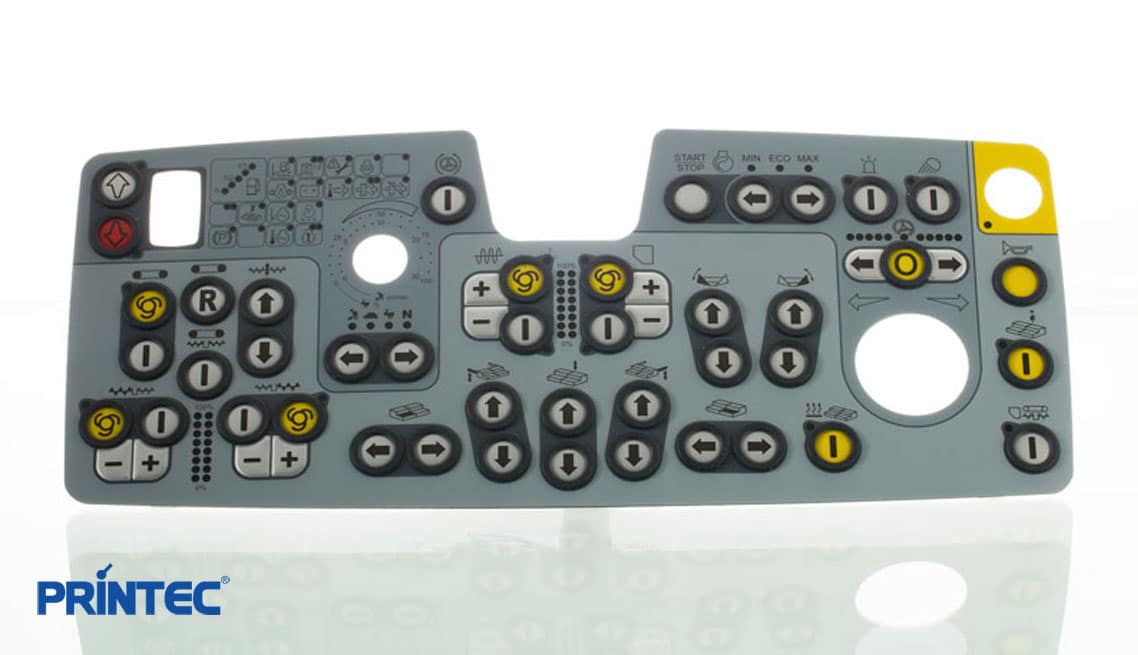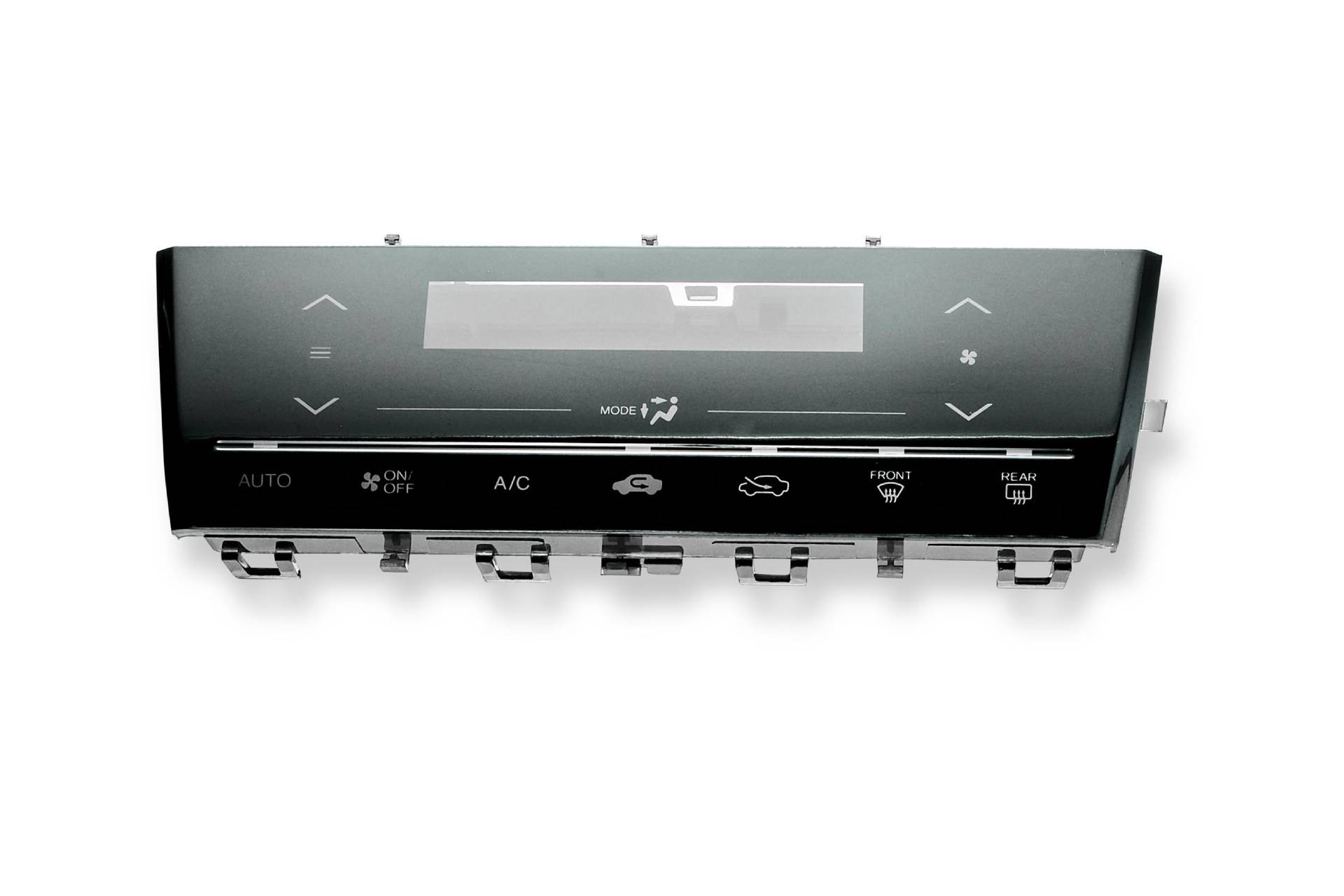Working with the right membrane switch manufacturer can greatly impact your product's success.
All Regarding Membrane Layer Switch: Understanding Its Style and Functionality
When you think of the control user interfaces in contemporary gadgets, membrane layer switches frequently come to mind. These components are a lot more than just buttons; they mix style and functionality flawlessly. Recognizing how they work and what makes them efficient can transform your perspective on everyday electronics. There are nuances to their style and performance that you may not be conscious of. Allow's explore what sets membrane switches apart from various other control systems.
What Are Membrane Switches?

Membrane layer switches can likewise be customized relating to shape, size, and graphics, permitting makers to create one-of-a-kind interfaces customized to certain items. Generally, membrane layer buttons play a substantial function in enhancing individual experience across a wide array of applications.
Exactly How Membrane Changes Job
When you press a secret on a membrane button, it activates a straightforward yet effective device. The top layer, often made from versatile product, pushes down onto a conductive layer below it. This activity bridges the gap between conductive traces, completing an electrical circuit. As quickly as the circuit closes, it sends a signal to the tool's controller, which interprets your input.
You'll notice that the responsive feedback varies based on the button style, offering either a soft click or a more pronounced reaction. As soon as you launch the trick, the membrane layer returns to its initial setting, resuming the circuit and stopping the signal. This process takes place nearly instantaneously, guaranteeing a receptive customer experience.
Membrane layer buttons are prominent as a result of their sturdiness and resistance to dust and moisture, making them perfect for various applications, from household devices to clinical devices. Understanding this operation assists you value their widespread use.
Trick Elements of Membrane Layer Buttons
Understanding the essential parts of membrane switches is basic for grasping their capability and design. The safety layer guards against ecological aspects and put on, prolonging the switch's lifespan. By recognizing these elements, you'll acquire understanding right into exactly how membrane layer switches over run and their importance in various applications.
Materials Made Use Of in Membrane Switch Design
The efficiency and durability of membrane layer changes greatly depend upon the products used in their layout. You normally encounter polyester and polycarbonate as key substratums because of their outstanding stamina and flexibility. These materials withstand scrapes and chemicals, making them perfect for requiring environments.
The conductive layers usually make use of silver or carbon, picked for their reliability and conductivity. membrane switch manufacturer. Silver offers remarkable performance, while carbon is a cost-efficient option. For the overlay, you may consider a matte or glossy finish, relying on your aesthetic requirements and individual experience
Adhesives play an essential function too; they bond layers safely and guarantee durability. Make certain to select adhesives that hold up against environmental aspects like temperature level and humidity. Finally, don't neglect the value of an excellent printing method for graphics, as it improves both capability and aesthetic appeal. Selecting the appropriate products will certainly assure your membrane switch stands the test of time.
Style Factors To Consider for Membrane Layer Switches
While designing membrane switches, it's crucial to take into consideration different variables that influence their functionality and user experience. Begin by focusing on the design and switch size; make certain they're instinctive and easy to navigate. Think about the responsive feedback you want to supply-- will users need a visible click or a softer touch? Additionally, believe about the materials you'll make use of, as they'll affect durability and aesthetics.
Don't neglect the graphic layout; clear labeling and shade contrast are substantial for visibility. Verify your design fits environmental elements, like dampness or temperature variations, which could impact performance. Lastly, remember the relevance of screening prototypes with genuine customers to collect comments and make necessary changes. This repetitive process aids you refine the design, verifying it meets both practical and visual needs efficiently. By thoroughly considering these elements, you'll produce a membrane button that boosts functionality and satisfaction.
Applications of Membrane Layer Switches
Membrane layer switches are functional elements found in various applications, from industrial tools to consumer electronics. You'll see their impact in devices that need sturdy user interfaces and in gadgets that gain from sleek designs. Recognizing these applications aids you appreciate the performance and practicality of membrane layer buttons in everyday technology.
Industrial Tools Use
When you're looking to boost the functionality of commercial tools, membrane layer switches supply a reputable remedy that incorporates resilience with straightforward layout. These buttons are ideal for extreme settings, giving resistance to dirt, dampness, and chemicals. Embrace membrane buttons to enhance your procedures and enhance overall performance.
Customer Electronic Devices Integration
In the domain of consumer electronics, membrane switches play an essential role in boosting customer communication and gadget functionality. Membrane buttons additionally assure longevity and resistance to dirt and moisture, expanding the life-span of your electronic devices. By selecting membrane switches, you enhance not simply the capability yet likewise the style of your devices, making everyday communications smooth and delightful.
Benefits and Drawbacks of Membrane Buttons
While membrane layer switches supply a variety of benefits, they also feature some downsides that you should take into consideration. One see page significant advantage is check this their compact layout, making them optimal for space-constrained applications. They're additionally cost-efficient, providing a long lasting option with a low manufacturing price. On top of that, their seamless surface area is simple to clean, improving hygiene in settings like healthcare facilities.

Nevertheless, there are disadvantages. Membrane buttons can have a much shorter life expectancy contrasted to mechanical buttons, especially under hefty usage. They can also be much less responsive, which might impact customer feedback during procedure. In addition, if damaged, repairing them can be tough and often needs total substitute. Ultimately, their level of sensitivity to severe temperature levels and ecological conditions might restrict their performance in particular settings. Balancing these advantages and disadvantages will help you establish if membrane layer buttons are the appropriate fit for your project.
Frequently Asked Questions
How Lengthy Do Membrane Layer Changes Typically Last?
Membrane layer switches over generally last between 5 to 10 years, depending upon usage and ecological problems. You'll wish to assess aspects like wear, exposure to dampness, and temperature level variations to determine their long life successfully.
Can Membrane Layer Switches Over Be Custom-made for Certain Styles?
Yes, you can personalize membrane layer switches to fit certain layouts (membrane switch manufacturer). You'll have the flexibility to select colors, shapes, and layouts that match your project's requirements, guaranteeing they mix effortlessly with your general aesthetic
What Is the Price Array for Membrane Switch Manufacturing?
The price variety for membrane layer switch manufacturing typically falls in between see here now $1 and $10 each, relying on factors like style complexity, amount, and products. You can obtain quotes from makers to find the finest choice.

Are Membrane Changes Water-proof or Resistant?
Membrane buttons can be made to be water-proof or immune, relying on materials used and building methods. If you require them for damp environments, ensure you define those demands throughout the layout procedure.
Just How Do Membrane Changes Compare to Standard Switches?
Membrane layer buttons are usually thinner and more flexible than conventional switches, offering a sleek layout. They're often easier to clean and incorporate, yet may not supply the tactile feedback you're used to with mechanical alternatives.
Verdict
